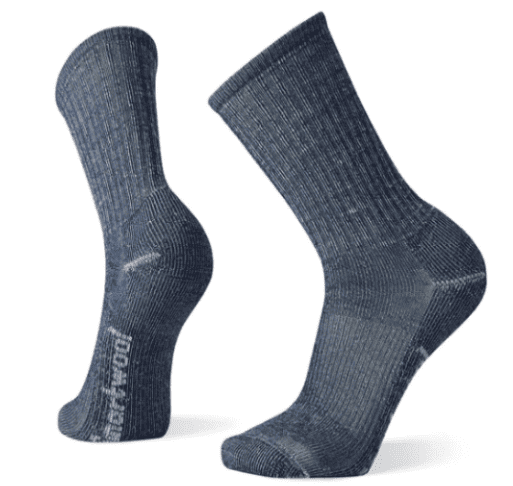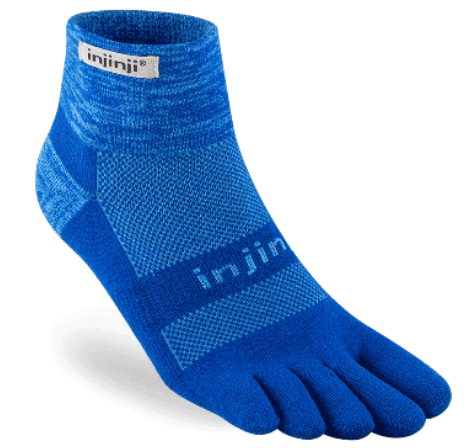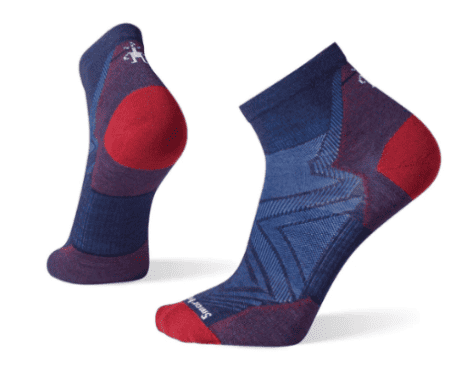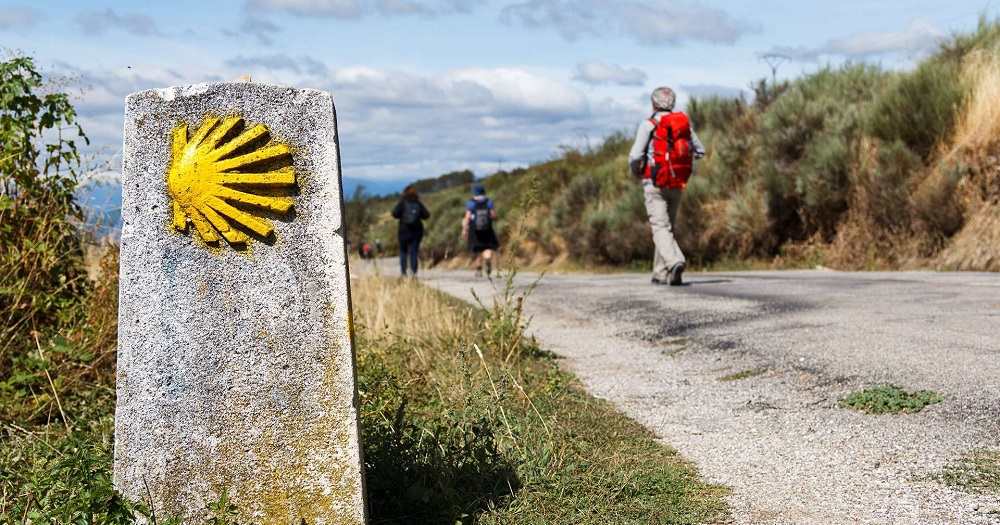Socks act as the interface between the skin of your feet and the shoe. They are crucial for preventing injury and keeping your feet feeling good and healthy when exercising.
Socks function to:
- Reduce moisture.
- Prevent blistering.
- Regulate temperature.
- Provide cushioning, support and comfort.
There are many different types of socks that podiatrists at Northside recommend for different activities.
Hiking Socks

Hiking socks are designed for maximum comfort whilst out on the trails. Typically, wool-based materials are used to wick moisture away from your feet, keeping them dry and comfortable. This helps to reduce friction and risk of blistering. Hiking socks come in different cushioning levels to offer impact protection from the sheering forces of rubbing against your hiking boots and to pad the underside of your feet.
We recommend Smartwool hiking socks as they also offer an elasticized arch in the sock, giving the middle of your foot more support whilst still padding the heel and forefoot, reducing the bulk of the sock, and increasing the in-shoe comfort.
Running Socks

Running with the wrong socks can cause all types of problems that impact your training. Regular cotton socks are not recommended for running as they often retain moisture when you sweat (sweating through your feet is very normal, we all do it!). However, moisture + heat + friction is a typical combination for a blister or rubbing hotspots to occur on your feet and as blisters are the most common sporting injury, having proper running socks is an easy step you can take to reduce this risk.
Running socks should be lightweight and not bulky, you don’t need as much padding to protect your foot as you do in a hiking shoe. They should be made from moisture wicking fabrics, such as wool or Injini’s COOLMAX fibers. Fit is important for running socks, you want a snug fit around the middle of your foot and no excess bunching material down at the toes. Injinji running socks are the toe-sock of choice for runners as the individual toe-sleeve design reduces interdigital friction and separates the toes.
Some running socks we recommend include the Smartwool PhD run socks, the Injinji Run Light and Mid-weight Run socks and the Feetures Elite Cushion range.
Diabetic Socks

Diabetic socks are important for the foot health of people living with diabetes because they are designed to target the risk factors specific to people with diabetes. Features of diabetic socks include moisture wicking materials, seamless and non-restrictive fit, light compression for improved blood flow or circulation.
Diabetic socks help keep the feet dry as they are made by materials that wick moisture away from the feet. This is important because increased moisture can lead to skin breakdown and infection, which can be particularly dangerous for people with diabetes.
Diabetic socks are also unique because they are seamless, particularly at the toes and ankle. This is helpful for preventing rubbing and blisters as well as not impacting or restricting the blood flow into your feet. Diabetic socks are also designed to promote blood flow to the feet, they don’t have tight elastic that digs into the skin, restricting circulation. They can also have gentle compression to help improve circulation. This is important because people with diabetes are at higher risk for delayed healing and foot injuries due to poor circulation.
Overall, diabetic socks are an important part of foot care for people with diabetes. They can help prevent foot injuries, promote healing, and reduce the risk of infection.
Useful Links (add links to these within the website)
- Smartwool socks
- Injini socks
- Light feet Diabetic socks



